Info
Subfamily: Panicoideae
Genus etymology: Urochloa = "tail grass" [Greek] refering to the small tail (mucro) of the upper lemma of some species
Species etymology: brizantha = "nodding flower" [Latin] refering to the florets hanging on the panicle branches
Photosynthetic type: C4 (warm season)
Nativity: naturalized - intentional
First recorded in Hawaiʻi: 2004
Map
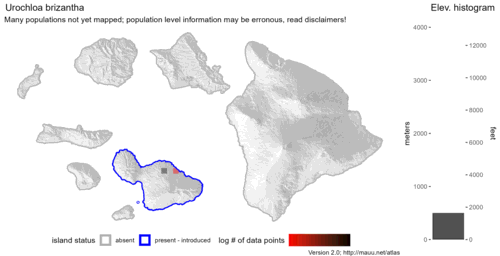
Inflorescence
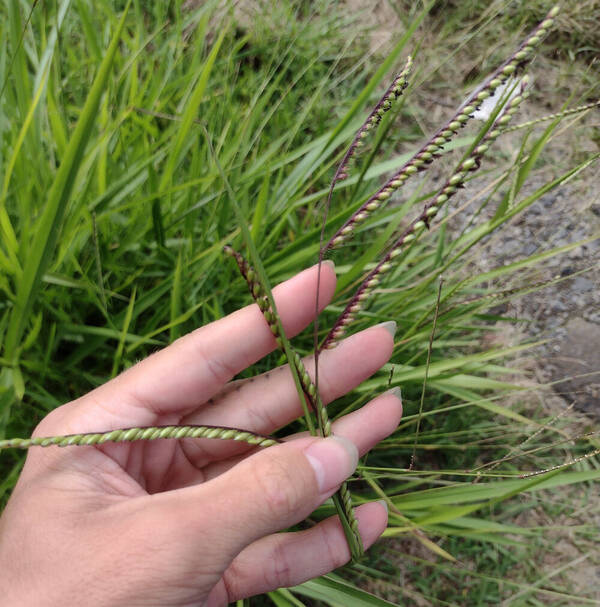
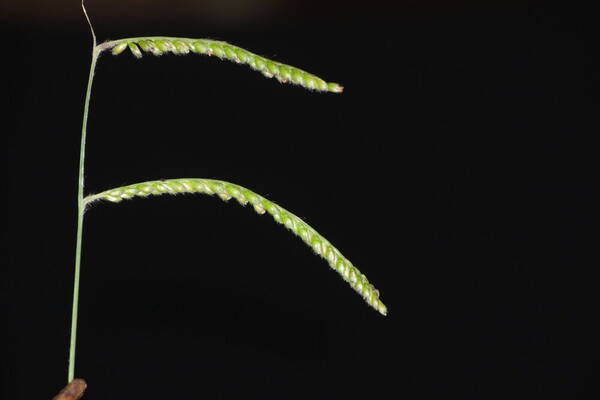
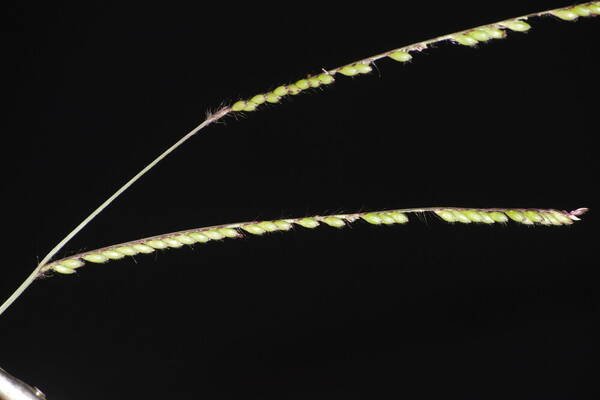
Plant
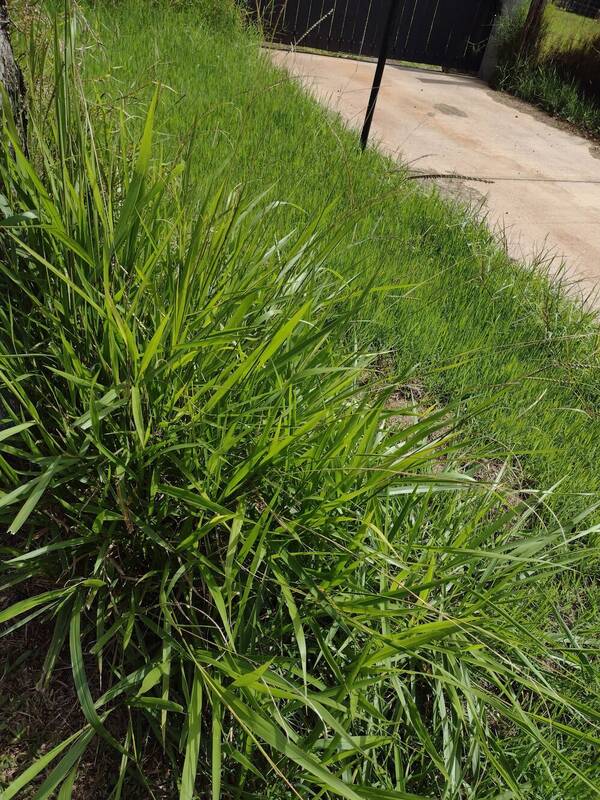
Spikelets
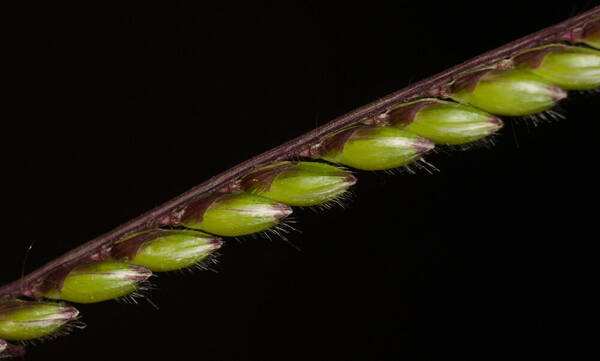
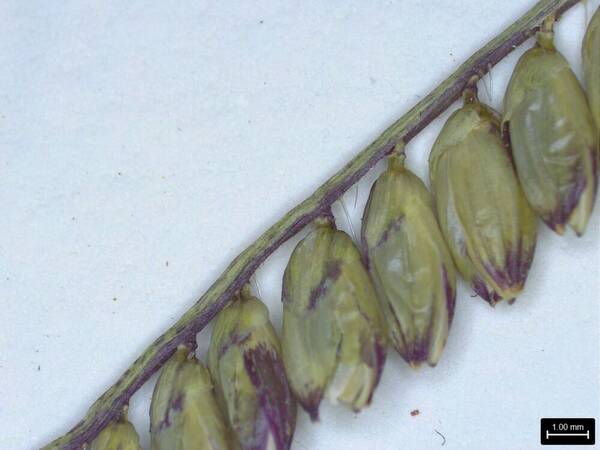
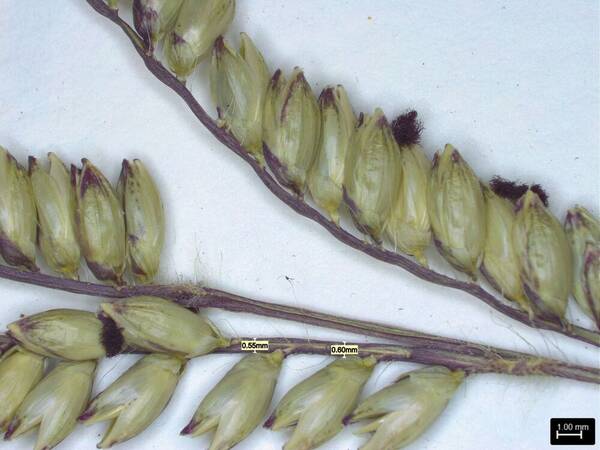
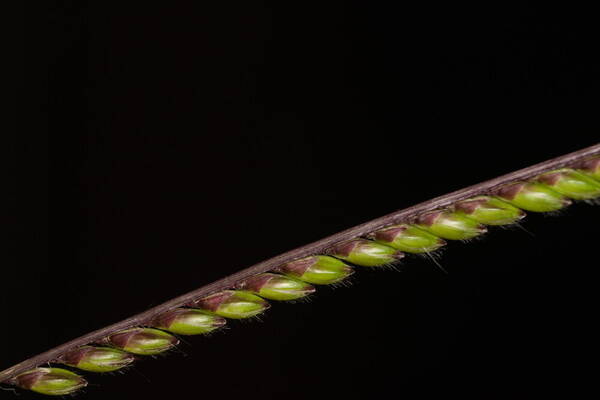
Description
Tufted perennial; culms 30–200 cm. high, erect or sometimes geniculately ascending. Leaf-blades linear to broadly linear, 10–100 cm. long, 3–20 mm. wide. Inflorescence of (1–)2–16 racemes on an axis 3–20 cm. long; racemes mostly 4–20 cm. long, bearing the spikelets singly, these typically forming a single row; rhachis crescentic in section, ± 1 mm. wide, with narrow inrolled wings, ciliate on the margins. Spikelets plumply elliptic, 4–6 mm. long, glabrous or sometimes sparsely pubescent, obtuse to subacute with a slight stipe at the base; lower glume 1/3, the length of the spikelet, clasping, acute or obtuse; upper glume cartilaginous, dully shining, separated from the lower by an internode; lower resembling the upper glume; upper lemma granulose, acute.
(Description source: Clayton, W.D. & Renvoize, S.A. 1982. Flora of Tropical East Africa. Gramineae (Part 3). A.A. Balkema, Rotterdam. 448 pp. )
Tufted perennial up to 200 cm high, erect or sometimes geniculately ascending; leaves linear to broadly linear. Inflorescence of (1–)2–16 racemes on an axis 3–20 cm long; racemes 4–20 cm long, bearing the spikelets singly in a single row on a rhachis crescentic in section and c. 1 mm wide. Spikelets plumply elliptic, 4–6 mm long, glabrous or sometimes sparsely pubescent, obtuse to subacute, with a slight stipe at the base; lower glume c. 1/3 the length of the spikelet, clasping, acute or obtuse; upper glume separated from the lower by a very short internode; upper lemma granulose, acute.
(Description source: Cope, T.A, (1995) Flora Somalia, Vol 4. Royal Botanical Gardens, Kew, London. 312 pp. )
Tufted perennial. Culms 30–200 cm. high, erect or sometimes geniculately ascending. Leaf laminae 3–20 mm. wide, flat. Inflorescence of (1)2–16 racemes, these mostly 4–20 cm. long, bearing spikelets singly and usually in 1 row; rhachis crescentic in section, c. 1 mm. wide with narrow involute wings, ciliate on the margins. Spikelets 4–6 mm. long, glabrous or sometimes sparsely pubescent, obtuse to subacute with a slight stipe at base. Inferior glume 1/3 length of spikelet, acute or obtuse, separated from the superior by a short internode; superior glume and inferior lemma cartilaginous, dully shining. Superior lemma granulose, subacute.
(Description source: Launert, E. & Pope, G.V. (eds.). 1989. Flora Zambesiaca. Volume 10. Part 3. Kew, London. 152 pp. )
Plants perennial; shortly rhizoma-tous. Culms (30)100-200 cm, erect or geniculately ascending, occasionally branched; nodes glabrous. Sheaths glabrous or pubescent between the veins, margins glabrous; collars glabrous; ligules 1-2.2 mm; blades 9-40 cm long, 6-20 mm wide, glabrous or hispidulous on both surfaces, margins usually ciliate basally. Panicles 3-20 cm long, 2.5-3 cm wide, with 1-7(16) spikelike primary branches in 2 ranks; rachises scabrous and pubescent; primary branches 4-16(20) cm, ascending to divergent, axils glabrous, axes 0.5-1.2 mm wide, narrowly winged and crescentric (the margins inrolled to produce a crescent-shaped cross section), mostly scabrous, margins ciliate with papillose-based hairs; secondary branches absent, pedicels shorter than the spikelets, glabrous, scabrous. Spikelets 4-6 mm long, 1.8-2.2 mm wide, ovoid to ellipsoid, with 0.3-0.5 mm calluses, solitary, in 1 row (rarely in 2 rows at the base of the lower branches), appressed to the branches. Glumes separated by about 0.5 mm; lower glumes 1.8-3.3 mm long, about 1/3 as long as the spikelets, 7-11-veined; upper glumes 3.6-5.9 mm, 7-veined, glabrous or pubescent, without evident cross venation; lower florets staminate; lower lemmas 3.8-5.8 mm, glabrous or pubescent, 5-veined; lower paleas present; upper lemmas 3.3-5.6 mm long, 1.6-2 mm wide, ellipsoid, apices acute, mucronate; anthers about 2.2-2.5 mm. 2n = 18, 36, 54.
(Description source: Barkworth, M.E., Capels, K.M., Long, S. & Piep, M.B. (eds.) 2003. Flora of North America, north of Mexico. Volume 25. Magnoliophyta: Commelinidae (in part): Poaceae, Part 2. Oxford University Press, New York. 783 pp http://floranorthamerica.org/Urochloa_brizantha )